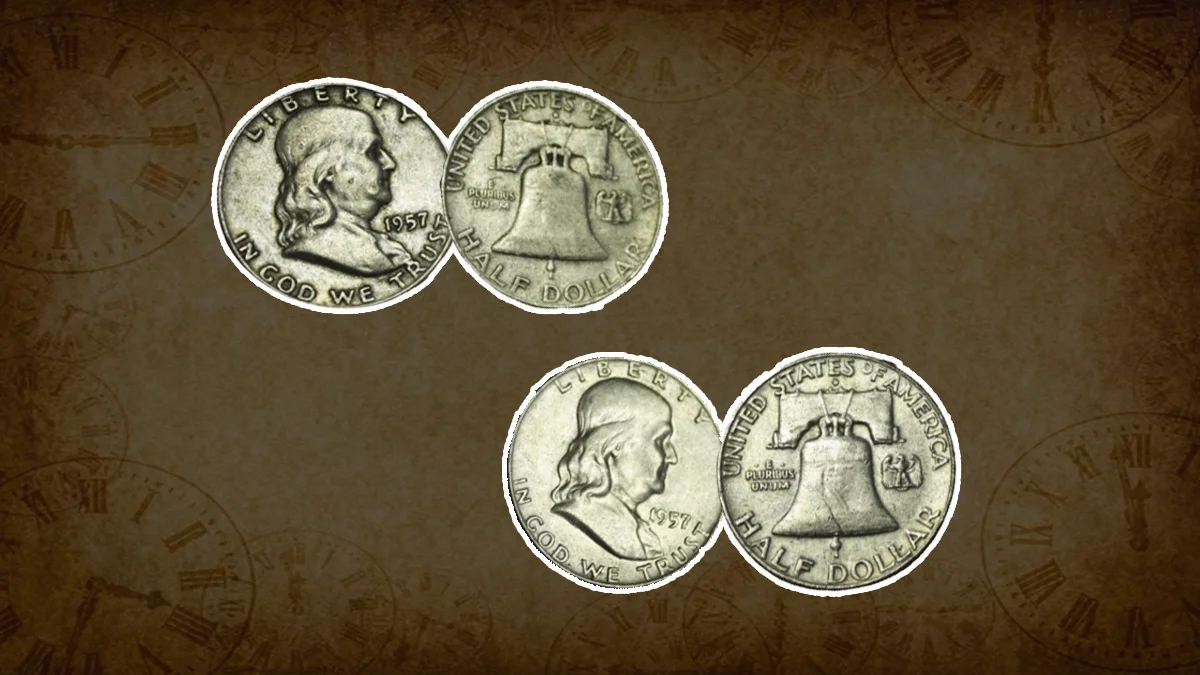
It can be challenging for many collectors, especially beginners, to rightly grade Franklin Half Dollars. It is important to correctly evaluate these coins because simple variations in condition can have significant implications on their value. Collectors can reliably offer a grade that reflects the coin’s value according to established grading guidelines. The Sheldon scale, which grades coins from 1 to 70, is the most effective strategy to achieve this.
Grading Standards for Franklin Half Dollars
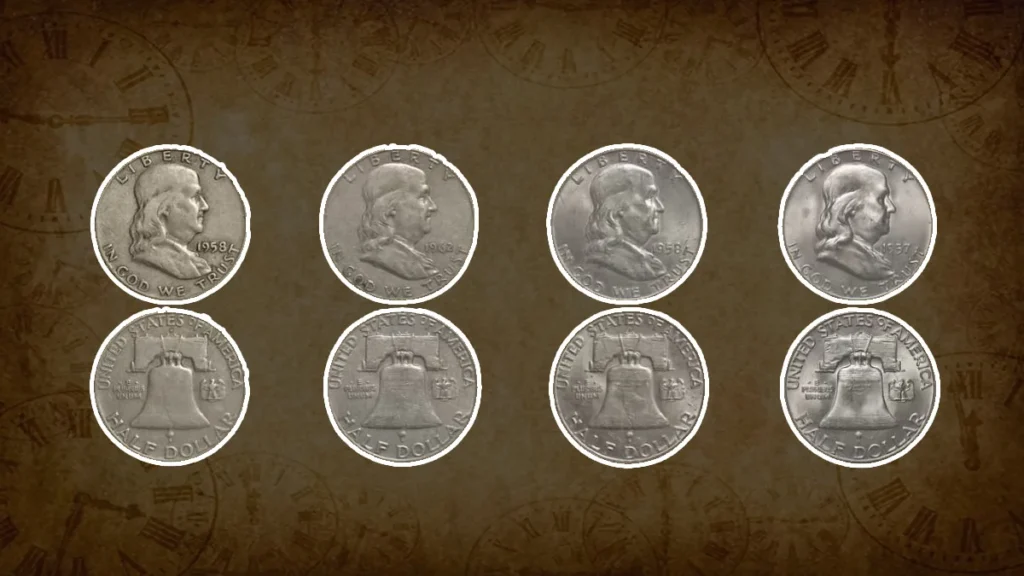
When evaluating Franklin Half Dollars, it is important to understand how to grade it. Checking even the smallest includes is important since the coin’s condition has a direct impact on its value. Notably, contact marks can continue to show wear on some coins that have been preserved in mint bags since they were minted. A reliable and reliable framework for grading these coins can be found by the American Numismatic Association’s (ANA) grading standards.
Regular Coin Grading Tiers
- Perfect Uncirculated (MS 70)
- Choice Uncirculated (MS 65)
- Uncirculated (MS 60)
- Choice About Uncirculated (AU 55)
- About Uncirculated (AU 50)
- Choice Extra Fine (EF 45)
- Extra Fine (EF 40)
- Choice Very Fine (VF 30)
- Very Fine (VF 20)
- Fine (F 12)
- Very Good (VG 8)
- Good (G 4)
- About Good (AG 3)
Proof Coin Grading Tiers
- Perfect Proof (PR 70)
- Choice Proof (PR 65)
- Proof (PR 60)
Understanding Grades for Franklin Half Dollars
First minted in 1948, the Franklin Half Dollar was made until 1963. Benjamin Franklin has been celebrated by this coin series, which is highly valued by collectors. Although being regarded as modern U.S. coins, design features, and minting procedures might make it difficult to find excellent examples.
Design Details and Challenges
The simple design of the Franklin Half Dollar features high-relief elements and ample open space, particularly on the obverse. This feature makes the coin dependent on “bag marks,” or contact marks, which occur when coins bump with other coins in storage bags. Top-tier grades may be difficult for even uncirculated coins because of these marks.
Key Characteristics to Assess
Three primary factors should be considered by collectors when grading Franklin Half Dollars:
- Toning and shine: A coin’s grade can be determined by its natural toning along with its bright shine, which may enhance its visual appearance.
- Bell Lines: Full Bell Lines (FBL) on the Liberty Bell are especially sought after. The presence or absence of these lines can make a significant difference in a coin’s desirability.
- Mint Marks and Dates: Specific years and mint locations yield different levels of detail and preservation.
Detailed Guide to Grading Franklin Half Dollars
Good Grade and Below (Average Circulated)

Overview: Coins in this range show extensive wear and are not usually considered valuable to serious collectors. Collectors often refer to them as “Average Circulated.”
Obverse:
- Features are almost flat and indicate significant wear.
- Franklin’s cheek, eyebrow, and hair all look round, but they are not defined.
- Individual lines have been covered by the merging of hair strands on the crown of the head.
Reverse:
- The Liberty Bell has most of its intricate details worn away, it is just smooth.
- The strap and beam show significant flattening, and the eagle’s feathers are scarce.
Very Good (VG 8, VG 10)
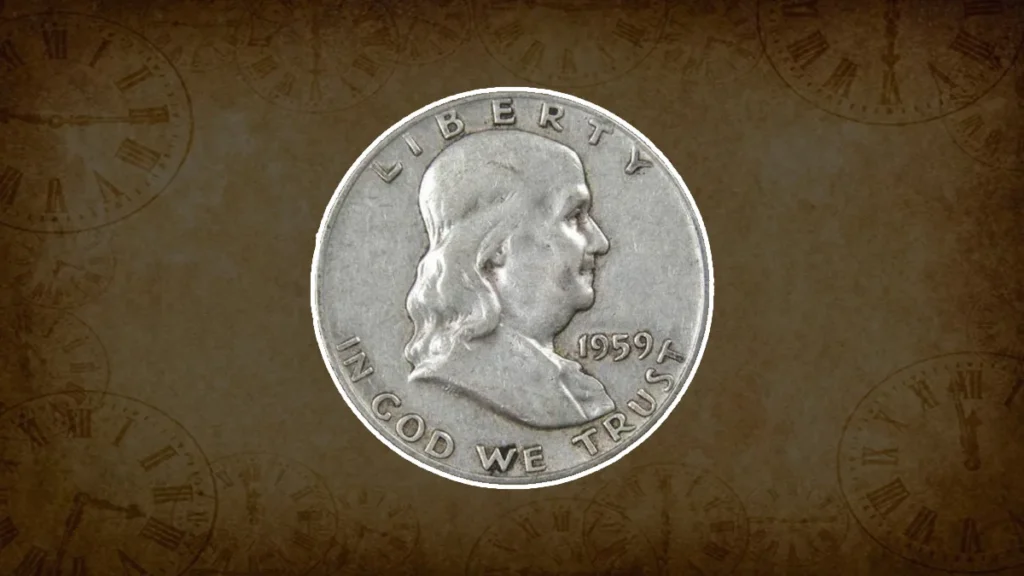
Overview: While these coins are in better condition than those in the lowest grades, they are still not attractive to most collectors.
Obverse
- Franklin’s head features are weak and smooth.
- Minimal detail is visible from the top of the head to the ear.
- The rim is complete, and the inscriptions and the date remain bold.
- The initials “JRS” below the shoulder are distinguishable but faint.
Reverse
- The Liberty Bell’s lettering is mostly worn away.
- The mint mark and remaining inscriptions are clear but show wear.
Fine (F 12, F 15)
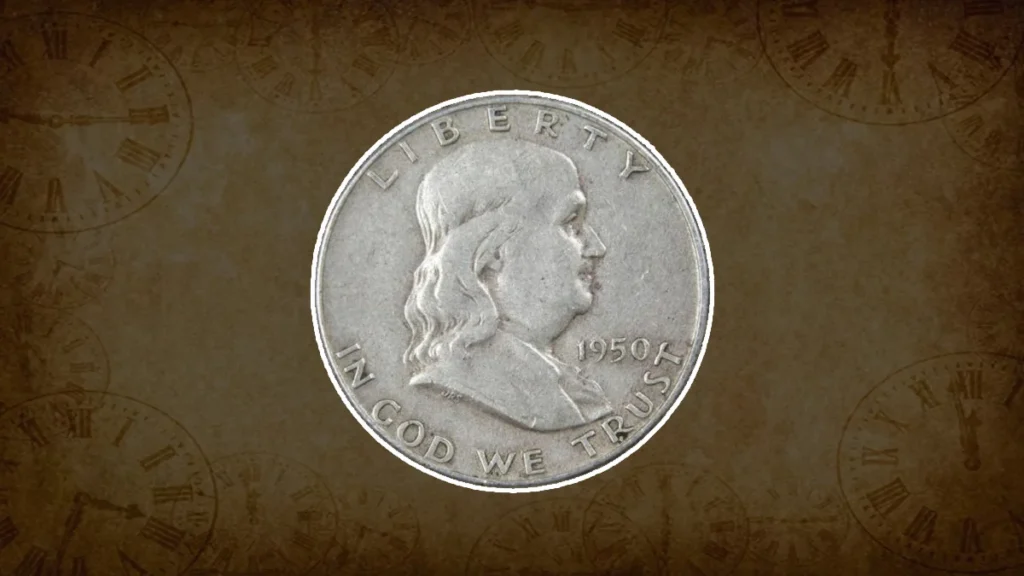
Overview: Coins in the “Fine” category offer moderate detail but are not highly desirable for modern collectors.
Obverse
- Franklin’s hair and cheek are still flat, but strands above the shoulder have some detail.
- Sinnock’s initials are discernible but weak.
Reverse
- The Liberty Bell’s inscriptions are mostly absent.
- The lower bell lines and beam straps show visible flattening.
Very Fine (VF 20, VF 25, VF 30, VF 35)
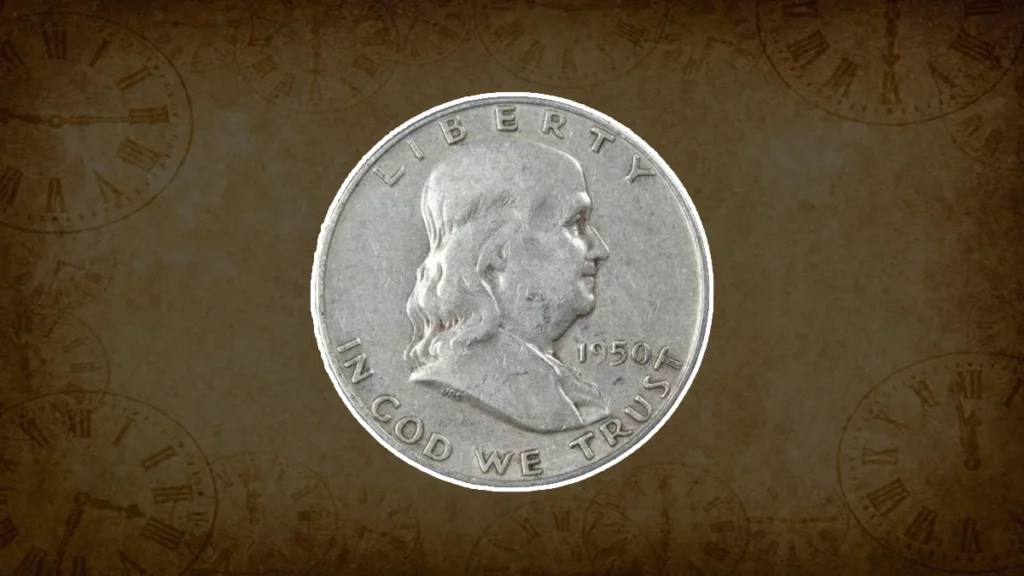
Overview: “Very Fine” graded coins display more details, but sub-grades vary in their level of preservation.
Obverse
- Flat spots are visible on Franklin’s hair, cheek, and shoulder.
- Hairlines are present but not sharply defined, covering around 75% of the hair.
Reverse
- The lettering on the Liberty Bell is worn but still discernible.
- Beam straps and lines near the crack of the bell are visible but show signs of wear.
Extra Fine (EF 40, EF 45)
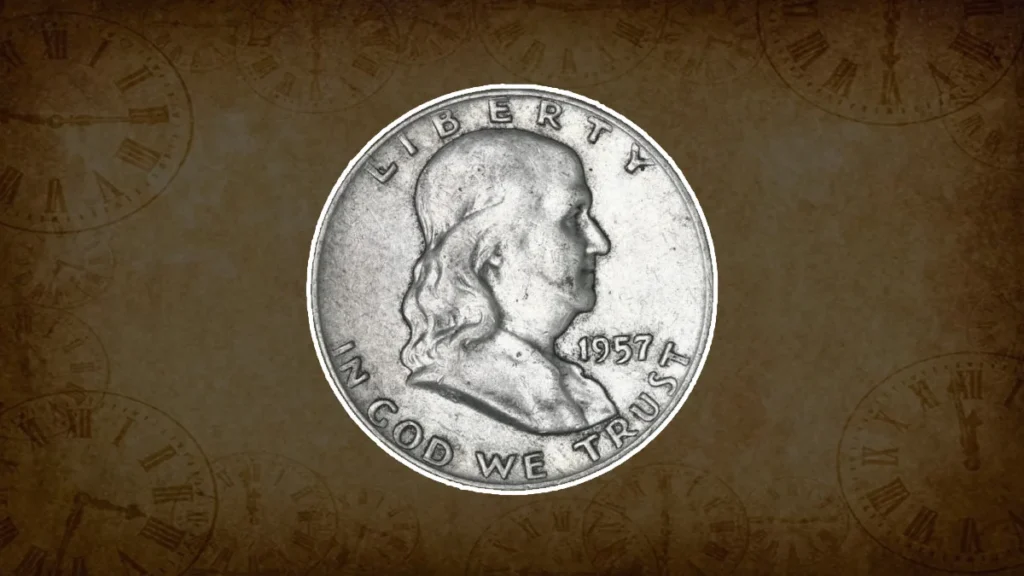
Overview: These coins are more visually appealing and retain most design details, making them desirable to collectors.
Obverse
- Light wear on the cheek and hair behind the ear.
- The nape of the neck retains sharp, moderate detail.
Reverse
- High points of beam straps are worn, but mint luster is visible.
- Lines along the bottom of the bell are defined and partially separated.
About Uncirculated (AU 50, AU 55, AU 58)
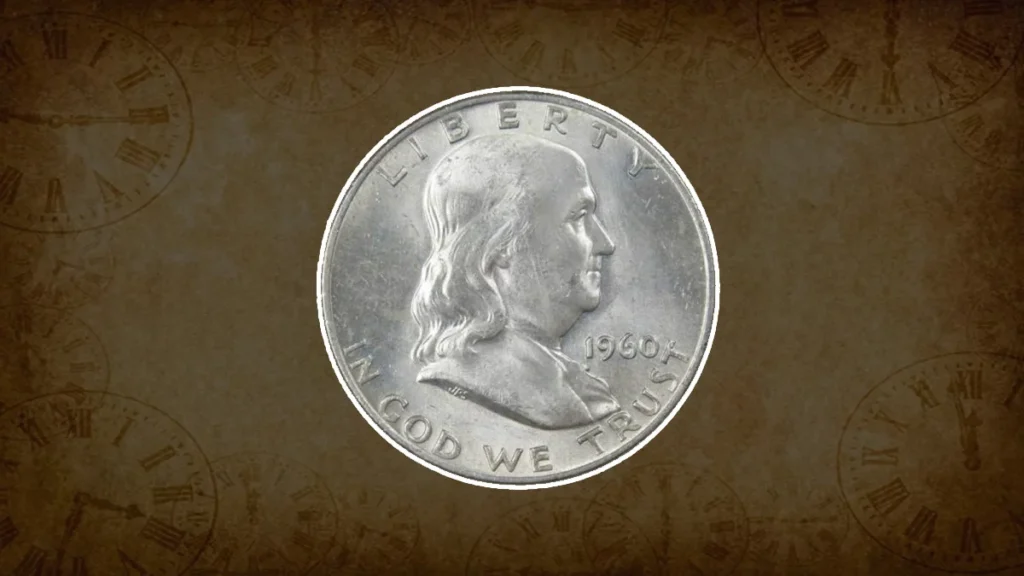
Overview: This grade represents coins that were briefly in circulation and show minimal wear.
Obverse
- Minor signs of wear on Franklin’s cheek and hair behind the ear.
- Luster is present over most of the coin.
Reverse
- The bell and lettering show slight wear but remain sharp.
- Beam ridges and the lower bell lines display minimal wear.
Mint State (MS 60 to MS 70)
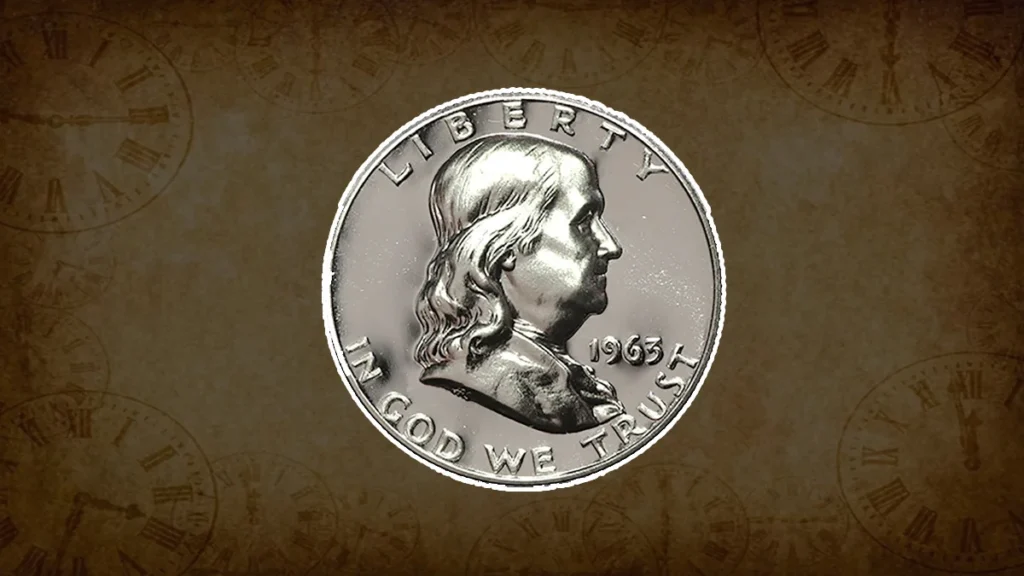
Overview: Mint State coins are uncirculated, but their exact grade depends on luster, detail, and the presence of contact marks.
Important Considerations:
- Even uncirculated coins may receive a lower Mint State grade if they show signs of cleaning or damage from abrasive substances.
- Master die degradation affected the detail quality, particularly from 1950 to 1959.
Sub-categories by Year:
- 1948 to 1949: Coins from this period are known for their detailed strikes and high quality.
- 1950 to 1954: Slight detail loss is common.
- 1955 to 1959: These years saw significant degradation in the master die, resulting in weaker designs.
- 1960s: A reworked die produced slightly better details, but many coins lack Full Bell Lines.
Tips for Collectors
- Avoid Cleaning: Never clean coins, as doing so can reduce their grade and value.
- Seek Professional Help: When in doubt, have your coin appraised by a professional or use trusted online appraisal services.
- Focus on Full Bell Lines (FBL): These coins are more valuable and sought after by collectors.
Related Post –
- How to Grade Barber Dimes?
- How to Grade Liberty Nickels: A Beginner’s Guide
- How to Grade Indian Head Penny?
Conclusion
Grading Franklin Half Dollars requires attention to detail and adherence to standardized practices. By following the Sheldon scale and paying attention to specific characteristics like toning luster, and bell lines, you can accurately determine a coin’s grade and value. Collectors who understand these nuances can build a collection with confidence and expertise.
FAQs
Q1. What is the Sheldon scale?
The Sheldon scale is a 70-point grading system used to evaluate the condition of coins, with 1 being the lowest grade and 70 being the highest (perfect uncirculated).
Q2. What are Full Bell Lines (FBL)?
Full Bell Lines refer to the fully visible lower horizontal lines on the Liberty Bell found on the reverse of the Franklin Half Dollar. Coins with these lines intact are more valuable.
Q3. Why are coins from 1949 to 1954 from San Francisco less detailed?
These coins often lacked detail because of insufficient pressure during minting, resulting in weaker strikes without Full Bell Lines.
Q4. Should I clean my Franklin Half Dollar?
No, cleaning a coin can damage its surface and decrease its grade and value. It is best left untouched or professionally treated.
Q5. What makes a Franklin Half Dollar valuable?
Factors like its grade, presence of Full Bell Lines, mint location, and overall condition. Coins from specific years and mints may be rarer and more valuable.
